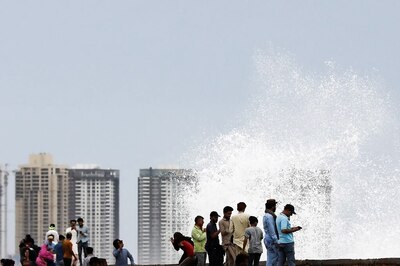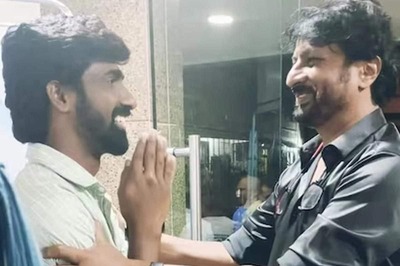
views
Brazilians have given Pope Francis a superstar's welcome on his first return to his home continent but the big question is whether the trip can help stop the hemorrhaging of the Catholic Church in Latin America.
The first Latin American pope is clearly relishing the enthusiasm at a time when the Church, which once was an unrivalled religious bastion on the continent, is grappling to hold onto faithful.
On Friday he took on the role of a simple priest and heard confessions of young people in Rio de Janeiro for an international Catholic jamboree. Later, he visited the archbishop's residence, where he again showed his personal touch by lunching with youth and meeting juvenile inmates.
Up to 1 million people turned out to see him at Rio's famed Copacabana beach on Thursday and even more were expected to see him on Friday night.
But the big turnouts cannot hide the fact that many Catholics in Latin America and beyond are abandoning the Church because of secularism, other faiths and repulsion from the sex and financial scandals that have roiled the Vatican in recent years.
Can Francis, the first non-European pontiff in 1,300 years, use the powers of charm, humility and communication that have made him an instant star since his election in March to turn the tide?
"The amount of influence any single pope has on long-term historical trends is limited," said John Allen, a correspondent for the National Catholic Reporter, a prominent US publication, and author of several books on the Vatican.
"Even though it's the pope we're talking about, we probably shouldn't expect miracles."
In Brazil alone, the number of Catholics has dwindled rapidly in the decades since its once-rural population moved increasingly to major cities, where modern consumer culture has overtaken more provincial mores and where Protestant denominations, aggressively courting followers in urban outskirts and shantytowns, have won over many converts.
While some 120 million people still identify themselves as Catholics, the percentage of the overall population in Brazil has dropped to 57 per cent from 75 per cent two decades ago, according to the polling organization Datafolha. The percentage of Catholics was 90 per cent in 1910, according to census figures.
Francis seems to have pressed all the right buttons since landing in Brazil for World Youth Day, a week-long gathering of young Catholics from around the world.
He has called on a return to humility and solidarity with the poor, visiting a slum like he did regularly as a cardinal in Buenos Aires. He also has criticized corruption and encouraged young people to speak out against injustice - a message that resonates in a country where more than 1 million people took to the streets in June 2013 to criticize graft, poor government and the rising cost of living.
"Many Catholics will realize they have been asleep after this wake-up call," said Fernando Altemeyer, a theologian at the Pontifical Catholic University of São Paulo. "The pope is calling on them to show more solidarity and brotherly love."
It helps, of course, that Francis, an Argentine, is perceived as a local.
"He has captivated local people," said Father Tom Rosica, head of Salt and Light, a Canadian television network. "This is not a distant, foreign, European figure who is coming in but this is one of us."
Analysts say Catholic officials are hoping the pope's visit will give the Church a boost in Latin America but it is still not clear how long it may last.
"He's obviously turned around impressions of the Church," Allen said.
"The Catholic Church faces serious challenges in many parts of the world and no single person can deliver the answers to all of them. However, it's clear that the Church is better positioned today to deal with its problems than it was five months ago," he said, referring to the final days of the pontificate of Benedict XVI.




















Comments
0 comment